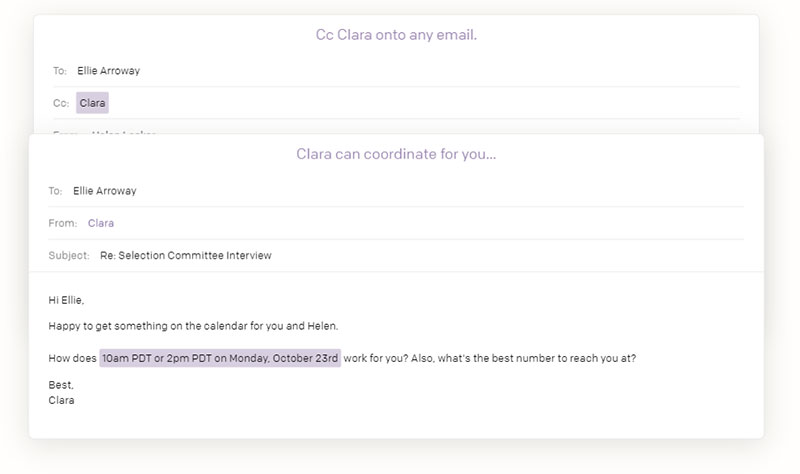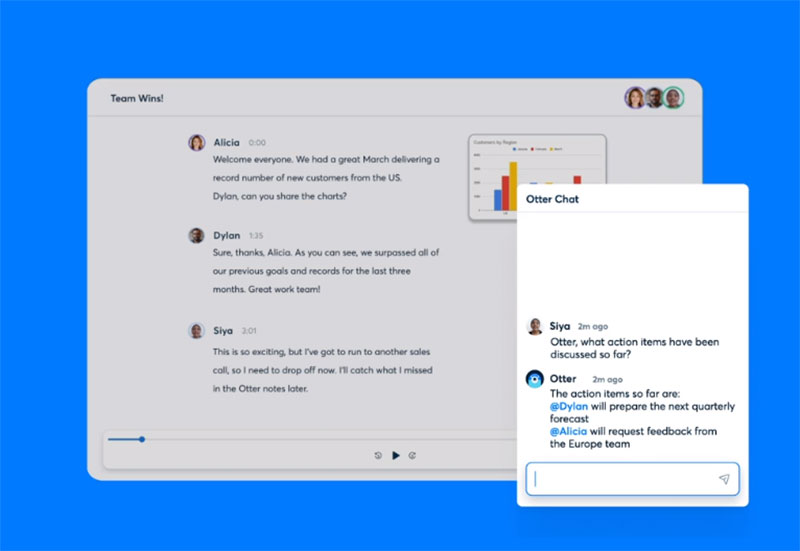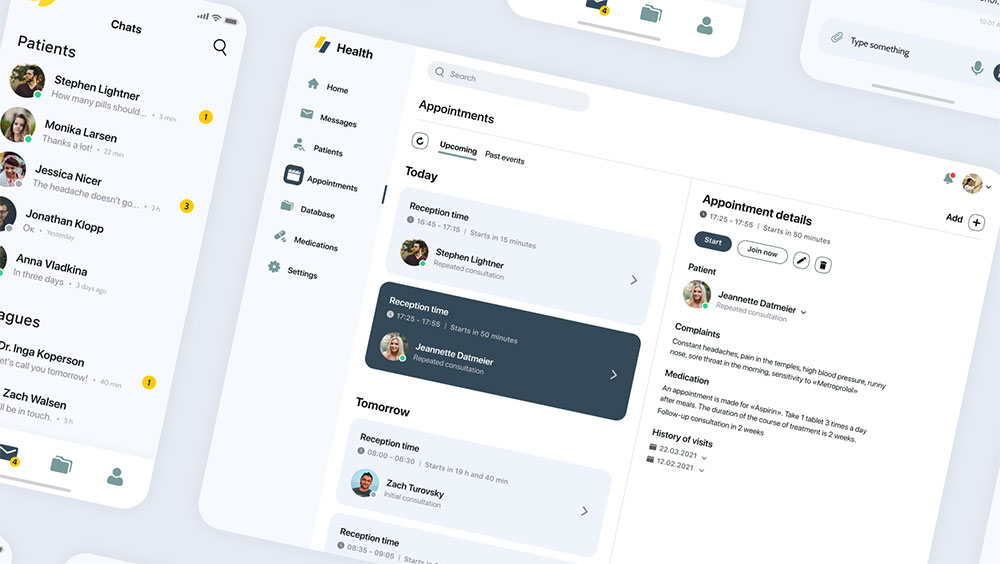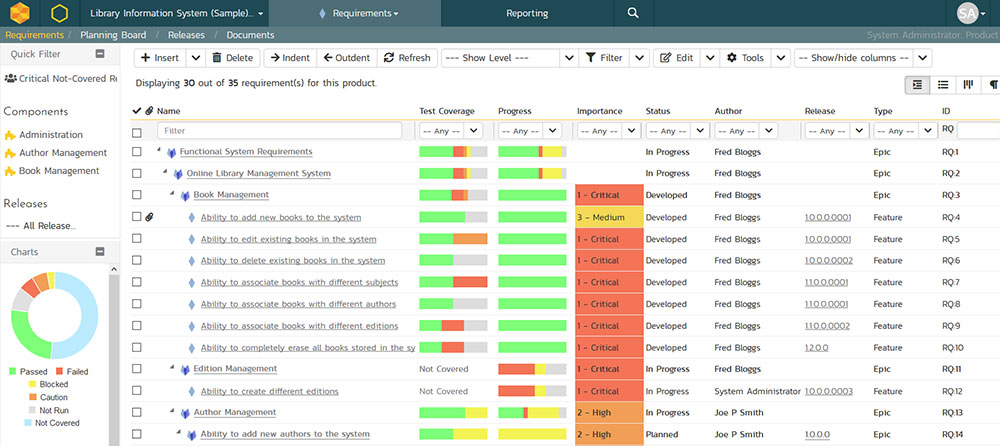Meetings. Meetings. And… more meetings! Remember when you could stroll into work, grab a cup of joe, and slide into that sweet productivity groove without interruptions? But now? It feels like you’re caught in an endless loop of… you guessed it, too many meetings.
The modern workplace? Well, it’s flooded with them. There’s a delicate balance between necessary collaboration and just drowning in too many gatherings. And oh boy, it often leans heavily into the latter.
Have you ever paused to think why our calendars are bursting at the seams with invites?
Meetings have become this wild beast that everyone’s trying to tame but can’t seem to get a grip on. Instead of acting as this fantastic tool for collaboration, they’ve become this energy-draining monster, eating away at our precious time and focus.
Oh, and guess what?
This isn’t just a random thing that happens. Nope, there’s a method to this madness.
Table of Contents:
- The Underlying Causes of Excessive Meetings
- The Tangible Impact of Too Many Meetings
- The Psychological and Cultural Implications
- Quantifying the Meeting Overload
- Strategies to Streamline Meetings
- Tools and Technologies to Optimize Meetings
The Underlying Causes of Excessive Meetings
Ah, the big question: Why do we have this meeting overload? Let’s dig deep and see what’s really causing this meeting fatigue.
Lack of Trust Within Teams
You know that little voice in your head that whispers, “Maybe they won’t do it right?” Well, that’s lack of trust for you.
And unfortunately, in the workplace, it manifests as a bazillion check-ins, updates, and yes, too many meetings.
Desire for Visibility, Especially for New Managers
Imagine being the new kid on the block, trying to make your mark. Some new managers tend to go overboard, hosting meetings for, well, the sake of visibility.
It’s like they’re screaming, “Hey, I’m here and I’m in charge!” without actually saying it.
Over-Reliance on Meetings for Communication and Updates
Let’s spill some tea! Some peeps think the only way to convey information is by dragging everyone into a room (or, in these Zoom fatigue days, a virtual room) and talking AT them.
But here’s the thing: Just because you can, doesn’t mean you should.
Tendencies of Inexperienced Entrepreneurs to Micromanage
Alright, we all know at least one. That enthusiastic, bright-eyed entrepreneur, so passionate about their baby project that they want to keep tabs on, well, everything.
Micromanage much? This leads to, yes, time-wasting meetings that could easily be skipped.
Unclear Roles and Responsibilities in Flat Structure Companies
Ever walked into a room and had no clue why you’re there? In companies with a flat structure, it can be tricky. When everyone’s equal, who does what? The boundaries get blurred, roles become fuzzy, and bam! You’re invited to way too many gatherings where you’re just twiddling your thumbs.
The Tangible Impact of Too Many Meetings
Alright, peeps, it’s story time. Ever felt like your brain was turning to mush after a day of back-to-back meetings? Yep, same. But what if I told you the whole “too many meetings” thing isn’t just draining your energy – it’s doing a whole bunch more than that?
Employee Dissatisfaction, Disengagement, and Burnout
Let’s be real for a sec. Nobody, and I mean nobody, wakes up thinking, “Oh yay, I hope I have 8 hours of meetings today!” Over time, this meeting overload (yeah, we’re back to that) can seriously mess with our heads.
- Job dissatisfaction: Who’da thought? If your workday feels more like a marathon of meetings than, well, actual work, the love for your job might just start fading.
- Disengagement: Every notice how your mind starts wandering off in a meeting? By the fifth one, you’re probably planning your weekend or doodling some masterpiece on your notepad.
- Burnout: This one’s the biggie. When time-wasting meetings eat up your day, work piles up, stress levels shoot up, and before you know it, you’re running on fumes.
Reduced Workplace Cohesion and Team Trust
Okay, so here’s the irony. Meetings are meant to bring teams together, right? But cram too many in, and guess what? They do the exact opposite.
Instead of feeling like a well-oiled machine, teams start feeling disjointed. Why? ‘Cause everyone’s just scrambling to catch up on the actual work they missed while being stuck in, yep, unproductive team gatherings.
And trust? Pshh! It takes a nosedive. ‘Cause if you’re constantly being pulled into meetings, it kinda feels like you’re not trusted to do your job. Not cool.
Decline in Productivity and Focus Time
Meetings, in theory, are supposed to make us more productive, but the irony strikes again. Too many of them, and they shatter our focus.
Imagine this: You’re in the zone, doing your thing, and then – ding! – calendar reminder for your next meeting. By the time it ends, and you get back to your task, it’s like starting all over. Talk about a serious case of meeting fatigue.
Financial Costs and Implications for Companies
Now let’s talk moolah. Believe it or not, these meetings? They’re kinda expensive. Think about it. If everyone in a room is being paid, say, $20 an hour, and the meeting lasts an hour with 10 peeps, that’s… (let me do the math real quick) … 200 bucks for that one hour. Now multiply that with too many meetings in a week. Ouch.
And don’t even get me started on those meetings that could have been emails. The cost of those? Through the roof.
The Psychological and Cultural Implications
Alright, party people, let’s get real deep now. You know those days when you’re back-to-back with meetings and by the end, you feel like your brain’s just left the chat?
Yep, it’s not just you. Too many meetings have some deep-seated impacts on our psyche and the overall vibe at the workplace.
Rise of “Zoom Fatigue” and Technostress
Ever heard of “Zoom fatigue”? Man, I swear it’s like the new catchphrase.
- The Virtual Burn: It’s not just about being in front of your screen. It’s about trying to catch micro-expressions, figuring out when it’s your turn to speak, and dealing with that awkward lag. By the end of it? Fried, like a burnt chip.
- Technostress: Yeah, it’s a thing. It’s like, the more tech we use, the more stressed we get. And all those notifications from calendar invites to meeting reminders? They’re like little brain zaps, stopping you in your tracks every time.
Culture of Boredom Versus Collaboration and Engagement
Once upon a time, meetings were these super cool things where you’d brainstorm and bounce ideas off each other. Now? With too many meetings, they’re more like that class you wanted to skip in school.
- The “Meh” Vibe: When you’re in meetings just for the sake of being in meetings, it becomes a drag. Instead of passion and excitement, it’s more about, “How long till this one ends?”
- Missed Connections: Sounds like a romance novel title, right? But for real, too much screen time means less real-time connection. Less laughter, less spontaneous ideas, and definitely fewer office inside jokes.
Mistrust and Lack of Empowerment Among Employees
Hold up, this is a biggie. All these unproductive team gatherings? They kinda give out this vibe that, “We don’t trust you to do your work, so let’s check in. A lot.”
- Being Watched: Feeling like Big Brother’s watching? With constant check-ins, it’s like working with a spotlight on you. Not the most comfy feeling, huh?
- Where’s The Power At? When every tiny decision needs a meeting, it’s like saying, “Hey, we don’t trust you to make choices.” And over time? That can feel like you’re just a cog in the machine, not a vibrant part of the squad.
Quantifying the Meeting Overload
Alright, folks, let’s break it down. Like, really break it down. We’ve been talking about the whole “too many meetings” scene, but how bad is it, really? Time to bust out some facts, figures, and – well, more facts. Let’s dive deep.
Research Findings on Meeting Frequencies and Durations
I remember reading up on this wild research about meeting overload. Man, the results were something.
- Frequency Overdrive: On average, peeps in corporate roles find themselves bouncing between meetings like 30% of their time. Yeah, you heard that right. That’s like, one-third of your entire workweek. Wild, right?
- Never-ending Saga: So, you know those meetings that feel like they go on forever? They kinda do. Many of them run over the allotted time. It’s like watching a 3-hour movie and then realizing there’s a surprise extended cut. Surprise!
The Actual Productive Hours in a Workday Versus Meeting Hours
Okay, picture this: you’ve got your fresh coffee, your killer playlist, and you’re ready to crush your to-do list. But wait, first a meeting. And then another. And… another.
- The Actual Grind: By the time you’re free from all the meeting madness, you might have, what, 3-4 hours of actual work time? If you’re lucky.
- The Slipping Sands of Time: Let’s say you’ve got a meeting at 10 AM and another at 11 AM. But the first one runs a tad late. Now you’ve lost not just the meeting time, but also that precious buffer in between.
The Staggering Yearly Amount of Time Spent in Meetings
Brace yourself. When you crunch the numbers on how much time we spend in meetings yearly? It’s jaw-dropping.
- Days Turned Into Months: Imagine if you took all your yearly unproductive team gatherings and strung them together. You might end up with months – literal months – of sitting, nodding, and occasionally zoning out. I mean, you could’ve learned to play the ukulele in that time!
- Opportunity Costs: And, not to get all economic-y here, but think of what you could’ve achieved in all that lost time. Projects completed, skills learned, or heck, even the number of TV series you could’ve binged.
Strategies to Streamline Meetings
Hey, you’ve stuck around! Love it. Now, let’s get into the good stuff – the strategies. If we’re sinking in the “too many meetings” quicksand, we need some serious life hacks to pull us out. Ready? Let’s rock this.
Setting Clear Agendas and Adhering to Them
First things first. Meeting agendas. I’m not talking about your secret plan to rule the world; I mean legit, written-down, this-is-what-we-are-gonna-talk-about agendas.
- The Game Plan: Before diving into any meeting, set up a clear-cut plan. Who’s talking? What about? How long? Sketch it out.
- Timeboxing: Assign a specific time slot for each point. Stick to it like glue. No more rambling about your weekend when we’ve got work to chat about.
Embracing Asynchronous Communication Tools
Alright, fam, here’s a golden nugget. Not everything needs a meeting. I repeat, not everything needs a meeting. Some stuff? Just shoot a message. We’ve got the tech for it!
- Ping, Not Ring: Use platforms like Slack, Teams, or whatever’s cool these days. Email, maybe? Or text message if you need to send an SMS link? Drop a message, get a reply. No need for everyone to synchronize their watches.
- Catch Up Later: With asynchronous comms, you respond when you can. If I’m in the middle of something juicy, I’ll catch up later. No biggie.
Implementing “No-Meeting” Days
Oh, this is the dream! Imagine a day, a full-blown 24 hours, without a single “let’s hop on a call” or “quick check-in”. Just pure, uninterrupted, get-stuff-done time.
- Sacred Space: Designate one day a week where no meetings happen. Period. Protect that space.
- Creativity Unleashed: You’d be surprised what you can come up with when your brain isn’t jumping from one video call to another.
Inviting Only Relevant Participants
Who hasn’t been in a meeting thinking, “Why am I even here?” Right? Stop the madness.
- Lean and Mean: Only get folks in the room (or on the call) that need to be there. Less is more.
- No More Spectators: If someone is just gonna sit there, mute, camera off, probably watching cat videos – maybe they don’t need to be in that meeting. Just sayin’.
Reducing Meeting Durations and Being Selective About Necessary Meetings
Listen, no one wants to sit through a 3-hour meeting. No one. Let’s trim the fat.
- Half It: If you’ve booked an hour, try to wrap in 30 minutes. Challenge yourself. Make it a game.
- Essential-Only Policy: Before setting up a meeting, ask yourself – is this 100% needed? Can it be an email? Can it be a message? Choose wisely.
Transitioning Status Updates to Platforms like Slack or Teams
Last point, peeps. Not every update needs a sit-down chat. We’ve got the tech to just, y’know, update.
- Quick Hits: Drop a line in your team channel. “Hey, finished the design tweaks. Check it out when you can.” Boom. Done.
- Threaded & Organized: With tools like Slack or Teams, you can have threaded conversations. So, if someone needs details, it doesn’t derail the whole convo.
Tools and Technologies to Optimize Meetings
Oh boy, we’re living in the future. Seriously, there are tools and tech out there that are like pure wizardry. Making meetings better? There’s an app for that. Let’s dive into the digital rabbit hole and uncover some gems.
Leveraging AI Meeting Assistants and Platforms
AI’s in the House: If someone had told me a few years back that robots (okay, AI) could help me with my meetings, I’d have laughed. But here we are.
These tools?
They’re rad. They help schedule, send reminders, and even transcribe stuff.
Clara Labs

Clara is like that assistant everyone wishes they had. This AI scheduler is particularly slick when it comes to email.
Send it on a thread, and it’ll set up meetings, find the perfect time that works for everyone, and even handle follow-ups. No more back-and-forth email tennis matches just to set a date!
Otter

Alright, ever had a moment in a meeting where you thought, “I wish I could replay that!”? Enter Otter.ai.
This buddy transcribes meetings in real-time. Yes, live! Plus, it can identify different speakers, which is kind of cool if you’re trying to remember who said that genius idea (or that super funny joke).
Zoom’s AI assistant

Not to be mixed up with the video platform – Zoom.ai is like your personal secretary.
It’s not just about scheduling; this AI digs into your business tools, CRM, documents, and pulls out the info you need for meetings. It’s like having a prep team for every meeting.
Fireflies.ai

Fireflies.ai joins your calls, listens in (not in a creepy way, promise), and then transcribes the whole conversation.
But that’s not all; it can pick out action items, questions, and follow-ups. After the call, it’s as if it hands you this neat summary, wrapped with a bow. Pure magic.
Utilizing Video Meeting Platforms for Better Engagement
- Eyes Up Here: Video meetings aren’t just about seeing faces (though it’s fun to see everyone’s home decor). It’s about engagement. You talk, they see. They talk, you see. It’s a whole vibe.
- Mix It Up: Sure, you’ve heard of Zoom. But have you tried other platforms? There’s a smorgasbord out there. Find what fits your groove.
Features like Live Transcription, Collaborative Note-Taking, and Bookmarking
- Auto-Subtitles: You ever watch TV with subtitles on? Same concept. Live transcription is like that, but for your meetings. Plus, it’s a lifesaver if you miss something.
- Teamwork Dreamwork: Collaborative note-taking is like doodling, but everyone’s doing it together. Share thoughts, jot down the next big idea, all in real-time.
- Bookmark Bonanza: Important moment? Bookmark it. It’s like a highlighter but for moments in your meeting.
FAQ on Having Too Many Meetings
Why are there so many meetings these days?
Ah, the million-dollar question! The workplace culture has shifted towards collaboration and keeping everyone in the loop. But sometimes, it’s overdone.
This over-reliance is often due to a lack of trust or a misguided perception of productivity. Meetings seem like work, but are they always?
Do loads of meetings mean higher productivity?
Surprisingly, not always. Many times, it’s just the opposite. Continuously having meetings can cut down actual work time, leading to inefficiency.
While collaboration is essential, there’s a need to strike a balance. Productive hours in a workday can be drowned in calendar invites.
What’s the big fuss about “Zoom fatigue”?
You’ve probably heard folks complaining about this one. “Zoom fatigue” refers to the exhaustion from continuous video calls.
Staring at screens, minimal physical movement, and the constant need to be “on” during a call can be draining. It’s that tech-induced tiredness; a clear sign of meeting overload.
How do too many meetings impact team morale?
Too many meetings can lead to dissatisfaction and burnout. When folks spend more time in meetings than doing actual work, it can be demotivating.
It’s like being in a communication overload without tangible outcomes. Team trust takes a hit too.
Can we ditch meetings altogether?
A tempting thought, but no. Meetings, when done right, are beneficial. They foster collaboration and clarity. But the keyword here is “right”.
The idea is not to eradicate but to optimize. Remember, asynchronous communication tools are golden.
What’s the financial hit of excessive meetings?
Believe it or not, meetings come with a price tag. Think about the hourly rates of all attendees. Those hours spent in meetings? They cost money.
Companies could be channeling funds into endless meetings without actual returns. A clear case of financial implications due to meeting frequencies.
Are all meetings bad then?
Nope, not at all. It’s about quality over quantity. Some meetings can spark innovation, align teams, or solve complex issues.
But the trick?
Knowing which ones to keep and which ones to toss. It’s like decluttering; keep the essentials, ditch the excess.
How can AI help in reducing meeting mayhem?
Good one! AI meeting assistants, like Otter.ai or Clara Labs, are game-changers. They can schedule, transcribe, or even highlight essential points from a meeting.
These tools optimize the process, ensuring you get the most out of each session without the extra baggage.
Are there any rules for effective meetings?
Totally! Setting clear agendas, inviting only relevant folks, and being time-bound are golden rules. And hey, why not try “no-meeting” days?
It gives everyone a breather and time to catch up on work. Also, asynchronous communication is your new best friend.
How often should we audit our meeting practices?
You know, it’s a bit like a health checkup. Doing it regularly ensures you catch any issues early. So, periodically take a step back, analyze, and recalibrate.
Embrace modern tools, trust your team, and make sure every meeting adds value. The path forward is all about efficient collaboration.
Conclusion
We’ve peeped at some swanky tools, learned some tricks, and are ready to tackle the world of endless meets.
The truth is that we gotta check ourselves. Regularly.
- Look Back: Every now and then, take a step back and look at your meetings. Are they effective? Too long? Too many? Adjust accordingly.
- Feedback Fiesta: Ask your peeps. What’s working? What’s a total flop? Use that info to switch things up.
You know what’s really at the heart of too many meetings? Trust. Or the lack of it.
- Power to the People: Give your peeps some autonomy. Trust them to do their thing without having to report every single detail.
- Change the Scene: It’s more than just tools and hacks. It’s about changing the whole dang culture. Make meetings meaningful. Value people’s time. Elevate trust.
If you enjoyed reading this article on too many meetings, you should check out this one about virtual teams.
We also wrote about a few related subjects like team meeting agenda and what makes a good manager.
- Design’s Descent: What Happened to Fab? - April 19, 2024
- Design Basics: iPhone App Icon Size Requirements - April 19, 2024
- Quick Guide For Developing Mobile Games - April 18, 2024








